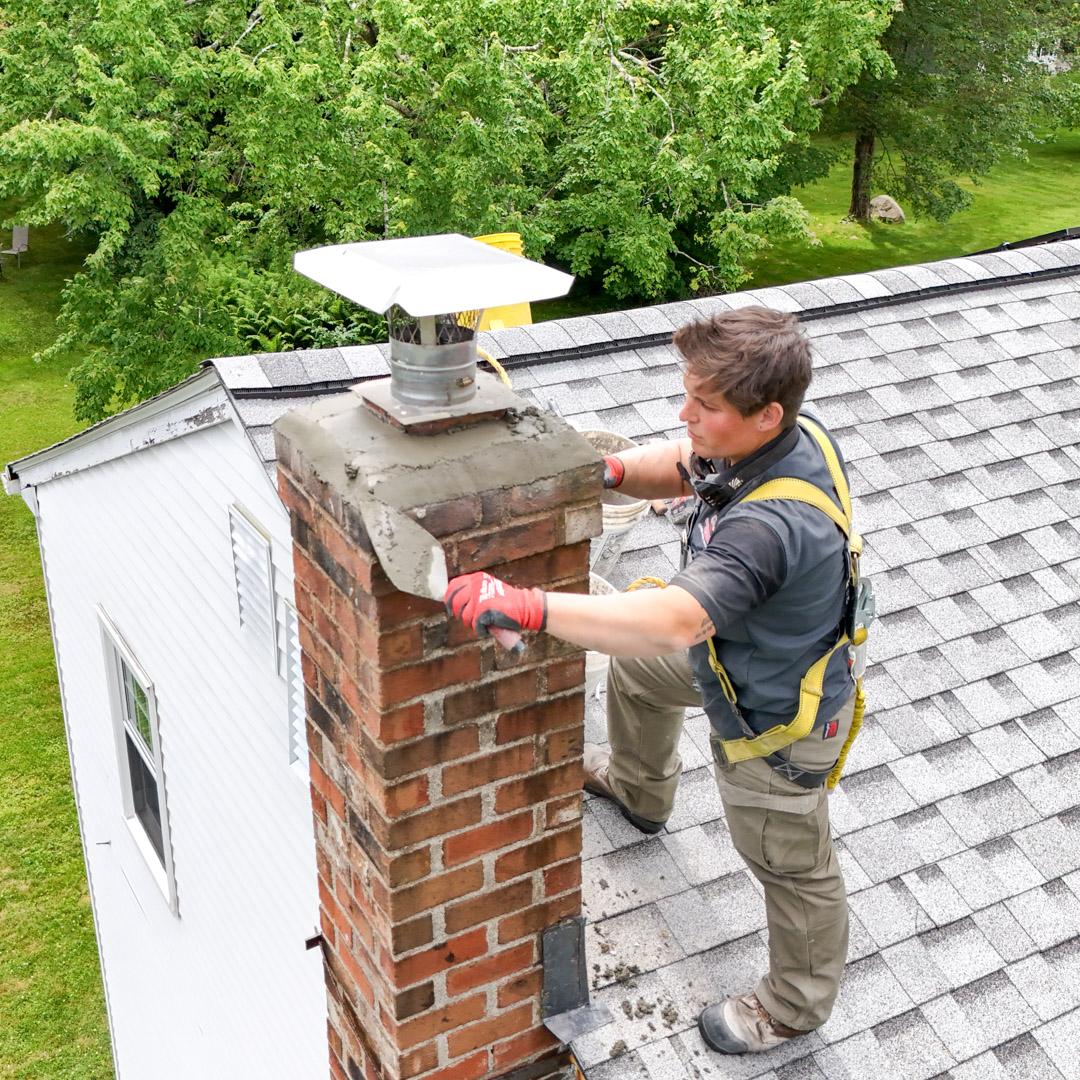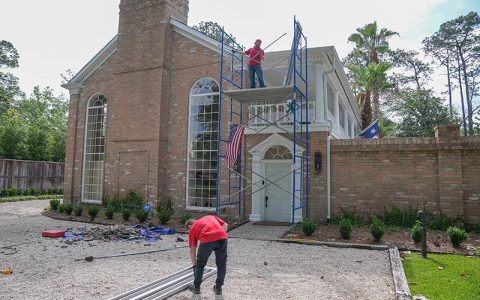A concrete chimney crown is the top protective slab of a masonry chimney, designed to prevent water from entering the chimney structure. It covers the entire top of the chimney, except for the flue openings.
Purpose of a Concrete Chimney Crown
The primary function of a concrete chimney crown is to protect the chimney's masonry from water damage. A well-constructed crown serves several critical purposes:
- Water Diversion: It is sloped away from the flue(s) to direct rainwater and snowmelt off the chimney and away from the masonry structure.
- Protection of Masonry: It prevents water from seeping into the bricks and mortar joints below. Water penetration can lead to spalling, cracking, and structural deterioration, especially during freeze-thaw cycles.
- Flue Protection: It helps to shield the top of the flue liner from direct weather exposure, although a chimney cap provides more comprehensive flue protection.
- Maintaining Structural Integrity: By preventing water damage, the crown helps maintain the overall structural integrity of the chimney.
Key Characteristics of a Properly Constructed Crown
For a concrete chimney crown to be effective and durable, it should possess the following characteristics:

- Material: Constructed from a high-strength, weather-resistant concrete mix, not standard mortar mix which is less durable for this application.
- Thickness: Adequately thick (typically at least 4 inches at its thinnest point, sloping upwards towards the flue) to provide strength and prevent cracking.
- Slope: A proper slope (at least 2 inches of drop per foot) to ensure efficient water runoff.
- Overhang (Drip Edge): The crown should extend beyond the chimney's vertical walls by at least 2 inches on all sides, creating a drip edge. This feature causes water to drip clear of the chimney face, preventing staining and water saturation of the brickwork below.
- Expansion Joint: A flexible sealant should be used around the flue liners where they pass through the crown to accommodate thermal expansion and prevent cracking.
- Reinforcement: Often reinforced with steel mesh or rebar to enhance strength and resist cracking.
Common Chimney Crown Problems
Chimney crowns are susceptible to damage over time due to constant exposure to the elements. Common issues include:
- Cracking: Caused by shrinkage during curing, freeze-thaw cycles, thermal expansion, or settling of the chimney structure.
- Spalling: The flaking or chipping of the concrete surface due to moisture penetration and freeze-thaw action.
- Deterioration: General wear and tear from weather, or the use of improper materials during construction.
- Poor Design: Crowns built with no slope, insufficient overhang, or made from weak mortar mix are prone to premature failure.
Maintenance and Repair
Regular inspection and maintenance are crucial for prolonging the life of a concrete chimney crown.
- Sealing: Minor cracks can often be sealed with a quality elastomeric sealant or a brush-on crown coating product specifically designed for this purpose.
- Patching: Larger cracks or spalled areas may require patching with appropriate concrete repair materials.
- Resurfacing: If the surface is moderately damaged but structurally sound, it can sometimes be resurfaced with a new layer of specialized crown coating.
- Rebuilding: Severely damaged or improperly constructed crowns typically require complete removal and replacement with a new, properly formed concrete crown. This is essential to prevent further damage to the chimney structure.
Early detection and repair of crown issues are vital to prevent more extensive and costly damage to the entire chimney system and potentially to the interior of the home.










